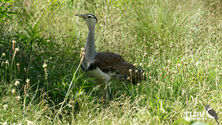
Shoppers Feedback:
Jan 17, 2017
Hello Ros,
I have now paid the invoice, but I would like to write to you just to say a big THANK YOU for getting me the Penguin!
The ChatterMate Penguin became a nice memory for me when I was in New Zealand, and I am so greatful to you for arranging so that I could have it! :-)
Thank you so much!!!!!!!!!!!
Regards,
Malin
Hi Ros,
Many thanks for your very kind email. I really appreciate your prompt reply!
I appreciate your advice regarding the decorations and customs. These are a gift for my daughter’s exchange student family so when she returns home on the weekend I will show her and see if she loves them as much as I do!
Thanks so very much again - I am truly grateful for your kind assistance.
Kind Regards
Bernadette
Ros,
Thanks again for the great customer service. It's a refreshing change!
Best regards,
Trevor
Hey Roz,
Thank you for your emails. Just loved my first order. The cute little Aussie bush critters are going to be used for an office Christmas decoration. My colleagues also liked them and talked about making an order to your site. I'll send you a photo when completed.
I'll be ordering more to send to my daughter's host family in America.
Fabulous service from you.
Kind regards,
Michelle
Thankyou. Order arrived today. One very happy grandson with his new beastly binoculars.
Regards,
Irene
- Home
- Wild Wonders
- Shop
- Aromas of Australia
- Australian Made
- Books
- Book Marks
- Christmas Decoration Sale
- Christmas Decorations
- Clocks
- Drink Holders
- Garden & Outdoor
- Gift Wrapping & Cards
- Home & Giftware
- Jewellery
- Keyrings
- New Products
- Pencils & Pen Holders
- Photo Frames
- Plush Toys
- Plush with Sound
- Sheepskin Rugs
- Stationery
- Stone Carvings
- Toys & Games
- Travel Goods
- Wedding
- Wild Figurines
- Wildlife Safety Products
- Wind Chimes
- Wine Charms
- View All Products
- Wildlife
- Australiana
- Explore
- Contact Us

Quick Facts
| Length: | - |
| Height: | 100 cm |
| Weight: | 4 500 grams |
| Colour: | Mainly grey-brown with dark markings, pale neck and black crown |
| Habitat: | Dry plains, grasslands and open woodland |
| Food: | Omnivorous - leaves, buds, seeds, fruit, frogs, lizards and invertebrates |
| Predators: | - |
| Status: | Endangered in New South Wales |
The Australian Bustard is one of Australia's largest birds. It is a mainly grey-brown bird, speckled with dark markings, with a pale neck and black crown, with a slight crest and a white eye-brow. There are bold black and white markings on the wing. The female is slightly smaller than the male. Newly hatched chicks are striped dark and light. The Bustard has a 'snooty' appearance as it walks sedately along, holding its head and neck high. When disturbed, it will walk away slowly, still watching. When it does fly, the flight is strong, with the ends of the wing feathers characteristically spread and up-curved. It may be found in small groups or singly. This species is also called the Plains Turkey or Wild Turkey.
The Australian Bustard is a bird of the inland and tropical north of mainland Australia. It is also found in southern New Guinea.
Australian Bustards are found on dry plains, grasslands and in open woodland.
They are nomadic, searching for food and numbers may sometimes irrupt (build up rapidly) and then disperse again. In some areas, such as the Atherton Tablelands in Queensland, there is regular seasonal movement.
Australian Bustards are omnivorous, eating leaves, buds, seeds, fruit, frogs, lizards, and invertebrates. They walk slowly, picking at food items as they wander, usually at twilight and after dark.
Australian Bustards breed once a year. When mating, the males clear a display area, then inflate a large throat sac, producing a loud, deep roaring noise, while they strut around with their tails cocked high. The large, olive-green egg may be laid on bare ground or in grass, but usually where the parent bird has a good view of approaching predators. The female sits low, well camouflaged, and she incubates and cares for the young.
Australian Bustards were once extensively hunted and shot for food and with habitat changes made by introduced mammals such as rabbits, cattle and sheep, they are now limited to inland areas. This species is listed as endangered in New South Wales.
Last Updated: Wednesday 17th July, 2013
BUSH e-TELEGRAPH
Signup for our monthly newsletter the "e-Telegraph"
Quick Links
Home | The Beginning | About The Land Down Under | Wild Wonders | Advertise on Wild Wonders | Christmas Decoration Sale | Christmas Tree Decorations | Drink Holders | Plush with Sound | Stone Carvings | Wildlife Wine Charms | Freebies | Australian Wildlife | Help Our Wildlife | Australiana | Photo of the Month | Explore The Land Down Under | Contact Us | Legal Notices

